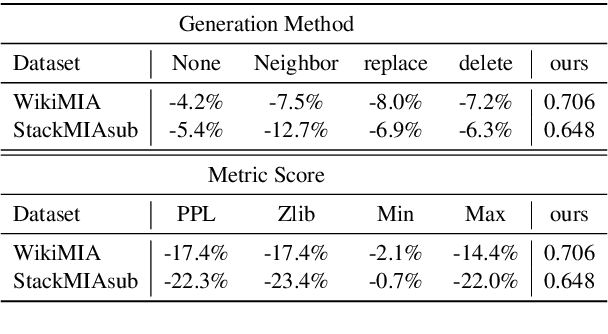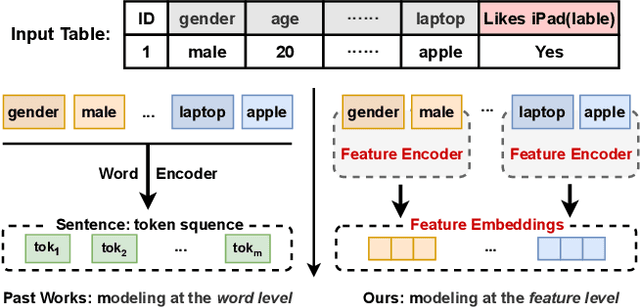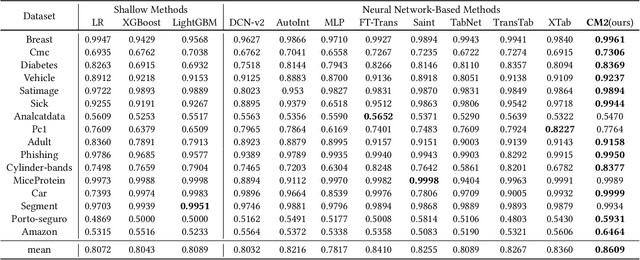Liyao Li
TableGPT2: A Large Multimodal Model with Tabular Data Integration
Nov 04, 2024Abstract:The emergence of models like GPTs, Claude, LLaMA, and Qwen has reshaped AI applications, presenting vast new opportunities across industries. Yet, the integration of tabular data remains notably underdeveloped, despite its foundational role in numerous real-world domains. This gap is critical for three main reasons. First, database or data warehouse data integration is essential for advanced applications; second, the vast and largely untapped resource of tabular data offers immense potential for analysis; and third, the business intelligence domain specifically demands adaptable, precise solutions that many current LLMs may struggle to provide. In response, we introduce TableGPT2, a model rigorously pre-trained and fine-tuned with over 593.8K tables and 2.36M high-quality query-table-output tuples, a scale of table-related data unprecedented in prior research. This extensive training enables TableGPT2 to excel in table-centric tasks while maintaining strong general language and coding abilities. One of TableGPT2's key innovations is its novel table encoder, specifically designed to capture schema-level and cell-level information. This encoder strengthens the model's ability to handle ambiguous queries, missing column names, and irregular tables commonly encountered in real-world applications. Similar to visual language models, this pioneering approach integrates with the decoder to form a robust large multimodal model. We believe the results are compelling: over 23 benchmarking metrics, TableGPT2 achieves an average performance improvement of 35.20% in the 7B model and 49.32% in the 72B model over prior benchmark-neutral LLMs, with robust general-purpose capabilities intact.
Navigate Complex Physical Worlds via Geometrically Constrained LLM
Oct 23, 2024



Abstract:This study investigates the potential of Large Language Models (LLMs) for reconstructing and constructing the physical world solely based on textual knowledge. It explores the impact of model performance on spatial understanding abilities. To enhance the comprehension of geometric and spatial relationships in the complex physical world, the study introduces a set of geometric conventions and develops a workflow based on multi-layer graphs and multi-agent system frameworks. It examines how LLMs achieve multi-step and multi-objective geometric inference in a spatial environment using multi-layer graphs under unified geometric conventions. Additionally, the study employs a genetic algorithm, inspired by large-scale model knowledge, to solve geometric constraint problems. In summary, this work innovatively explores the feasibility of using text-based LLMs as physical world builders and designs a workflow to enhance their capabilities.
Data Contamination Calibration for Black-box LLMs
May 20, 2024



Abstract:The rapid advancements of Large Language Models (LLMs) tightly associate with the expansion of the training data size. However, the unchecked ultra-large-scale training sets introduce a series of potential risks like data contamination, i.e. the benchmark data is used for training. In this work, we propose a holistic method named Polarized Augment Calibration (PAC) along with a new to-be-released dataset to detect the contaminated data and diminish the contamination effect. PAC extends the popular MIA (Membership Inference Attack) -- from machine learning community -- by forming a more global target at detecting training data to Clarify invisible training data. As a pioneering work, PAC is very much plug-and-play that can be integrated with most (if not all) current white- and black-box LLMs. By extensive experiments, PAC outperforms existing methods by at least 4.5%, towards data contamination detection on more 4 dataset formats, with more than 10 base LLMs. Besides, our application in real-world scenarios highlights the prominent presence of contamination and related issues.
TableGPT: Towards Unifying Tables, Nature Language and Commands into One GPT
Aug 07, 2023



Abstract:Tables are prevalent in real-world databases, requiring significant time and effort for humans to analyze and manipulate. The advancements in large language models (LLMs) have made it possible to interact with tables using natural language input, bringing this capability closer to reality. In this paper, we present TableGPT, a unified fine-tuned framework that enables LLMs to understand and operate on tables using external functional commands. It introduces the capability to seamlessly interact with tables, enabling a wide range of functionalities such as question answering, data manipulation (e.g., insert, delete, query, and modify operations), data visualization, analysis report generation, and automated prediction. TableGPT aims to provide convenience and accessibility to users by empowering them to effortlessly leverage tabular data. At the core of TableGPT lies the novel concept of global tabular representations, which empowers LLMs to gain a comprehensive understanding of the entire table beyond meta-information. By jointly training LLMs on both table and text modalities, TableGPT achieves a deep understanding of tabular data and the ability to perform complex operations on tables through chain-of-command instructions. Importantly, TableGPT offers the advantage of being a self-contained system rather than relying on external API interfaces. Moreover, it supports efficient data process flow, query rejection (when appropriate) and private deployment, enabling faster domain data fine-tuning and ensuring data privacy, which enhances the framework's adaptability to specific use cases.
CT-BERT: Learning Better Tabular Representations Through Cross-Table Pre-training
Jul 10, 2023



Abstract:Tabular data -- also known as structured data -- is one of the most common data forms in existence, thanks to the stable development and scaled deployment of database systems in the last few decades. At present however, despite the blast brought by large pre-trained models in other domains such as ChatGPT or SAM, how can we extract common knowledge across tables at a scale that may eventually lead to generalizable representation for tabular data remains a full blank. Indeed, there have been a few works around this topic. Most (if not all) of them are limited in the scope of a single table or fixed form of a schema. In this work, we first identify the crucial research challenges behind tabular data pre-training, particularly towards the cross-table scenario. We position the contribution of this work in two folds: (i)-we collect and curate nearly 2k high-quality tabular datasets, each of which is guaranteed to possess clear semantics, clean labels, and other necessary meta information. (ii)-we propose a novel framework that allows cross-table pre-training dubbed as CT-BERT. Noticeably, in light of pioneering the scaled cross-table training, CT-BERT is fully compatible with both supervised and self-supervised schemes, where the specific instantiation of CT-BERT is very much dependent on the downstream tasks. We further propose and implement a contrastive-learning-based and masked table modeling (MTM) objective into CT-BERT, that is inspired from computer vision and natural language processing communities but sophistically tailored to tables. The extensive empirical results on 15 datasets demonstrate CT-BERT's state-of-the-art performance, where both its supervised and self-supervised setups significantly outperform the prior approaches.
 Add to Chrome
Add to Chrome Add to Firefox
Add to Firefox Add to Edge
Add to Edge